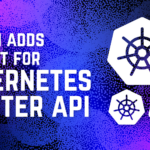
Kubernetes has become the go-to platform for container orchestration, enabling developers to deploy and manage applications at scale with ease. However, Kubernetes’ powerful features come with a learning curve, and even experienced developers can fall into common pitfalls that impact the performance, security, and reliability of their deployments. Understanding these common mistakes—and how to avoid them—can help developers maximize the benefits of Kubernetes and streamline their deployment process.
Here are the top five mistakes developers often make when deploying to Kubernetes and how to steer clear of them.
1. Misconfiguring Resource Requests and Limits
The Mistake:
One of the most common mistakes is misconfiguring resource requests and limits, or not setting them at all. Resource requests and limits define the minimum and maximum CPU and memory a container can use, helping Kubernetes allocate resources efficiently across all applications. When these are set incorrectly, it can lead to performance issues, resource contention, and even application crashes. For instance, setting limits too low may cause the container to run out of memory, while overly high limits can waste resources and impact other applications.
How to Avoid It:
Always define resource requests and limits for each container based on realistic usage data. Start by monitoring the resource usage of your containers to understand their needs, then set resource requests slightly above average usage and limits at a maximum threshold. This ensures Kubernetes can allocate resources effectively and prevents containers from hogging resources or crashing due to memory constraints. Tools like Prometheus and Grafana can help you track resource usage and optimize these settings over time.
2. Not Properly Managing Secrets
The Mistake:
Many developers make the mistake of storing sensitive data like passwords, API keys, and tokens in plaintext within their application code or configuration files. This can lead to security vulnerabilities, especially if access to these files is not strictly controlled. In a Kubernetes environment, such oversight can expose critical secrets to anyone with access to the cluster.
How to Avoid It:
Kubernetes offers a built-in mechanism for managing secrets through the Secrets API, which allows developers to store and manage sensitive information securely. Always use Kubernetes Secrets to store any sensitive data, and ensure that these secrets are encrypted both in transit and at rest. Additionally, manage access permissions carefully, only allowing authorized users and services to access the secrets. Using external secret management tools like HashiCorp Vault can also enhance security, especially in larger, more complex environments.
3. Overlooking Health Checks (Readiness and Liveness Probes)
The Mistake:
Neglecting to set up proper health checks—readiness and liveness probes—is a frequent mistake. These probes inform Kubernetes about the health of your application. A liveness probe checks if a container is running correctly, while a readiness probe checks if a container is ready to serve traffic. Without these probes, Kubernetes may not detect issues with your application, resulting in poor user experience due to unresponsive or unhealthy services.
How to Avoid It:
Implement both readiness and liveness probes for all services within your Kubernetes deployment. Define clear conditions under which your application is considered healthy and ready to accept traffic. For instance, if your application needs a certain amount of time to initialize or connect to a database, configure the readiness probe to wait until those steps are complete. Setting up these probes ensures that Kubernetes can identify and handle issues by restarting failed containers or rerouting traffic to healthy ones, maintaining the availability and reliability of your application.
4. Failing to Optimize Persistent Storage Usage
The Mistake:
Many applications need persistent storage to retain data even after a container restarts. A common mistake is not optimizing persistent storage usage or misusing it. For example, using local storage for data that needs to persist beyond the lifecycle of a container can lead to data loss if the container is rescheduled to a different node. Additionally, failing to manage persistent volumes effectively can result in unnecessary storage costs and potential data integrity issues.
How to Avoid It:
Use Kubernetes Persistent Volumes (PVs) and Persistent Volume Claims (PVCs) for applications that require durable storage. These mechanisms allow you to define storage that persists independently of the containers using it. Select the appropriate storage class based on your needs (e.g., high IOPS for databases or high durability for logs). For cloud-based deployments, leverage cloud provider-managed storage options (like AWS EBS or Google Cloud Persistent Disks) to ensure data resilience and reliability. Finally, regularly monitor and clean up unused volumes to avoid excessive storage costs.
5. Ignoring Role-Based Access Control (RBAC)
The Mistake:
Security is often an afterthought, especially in development and testing environments. A major oversight is ignoring Role-Based Access Control (RBAC) in Kubernetes, which can lead to unrestricted access for users and applications. Without RBAC, any user with access to the cluster could potentially modify, delete, or access critical resources, posing a serious security risk.
How to Avoid It:
Implement RBAC policies from the start to restrict access to resources based on user roles and responsibilities. Define roles for different types of users, such as developers, testers, and administrators, granting only the permissions necessary for their tasks. Regularly audit your RBAC configurations to identify overly permissive roles, and follow the principle of least privilege to minimize the risk of unauthorized access. Tools like Open Policy Agent (OPA) and Kubernetes’ built-in auditing features can help you manage and monitor access control effectively.
Conclusion
Kubernetes is a powerful platform that offers flexibility and scalability, but it requires careful configuration to avoid common mistakes that can compromise application performance, security, and reliability. By setting up proper resource limits, managing secrets securely, configuring health checks, optimizing storage, and enforcing RBAC, developers can deploy applications confidently and maximize the benefits of Kubernetes. Taking the time to set these practices in place ensures that your Kubernetes environment remains efficient, resilient, and secure, allowing your team to focus on delivering high-quality applications at scale.
Avoiding these common pitfalls will not only enhance your Kubernetes experience but also contribute to a more stable and reliable infrastructure. As you grow more familiar with Kubernetes best practices, your deployments will become more robust and adaptable, supporting your applications’ growth and success over time.
Follow us for more Updates













